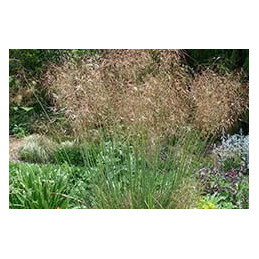
Iris sibirica 'Silver Edge'
Still one of the most graceful cultivars with deep blue flowers edged silver.


Improved form with wider leaf blades than the species and larger inflorescence. A beautiful plant for larger spaces.
Improved form with wider leaf blades than the species and larger inflorescence. A beautiful plant for larger spaces.
Data sheet
Still one of the most graceful cultivars with deep blue flowers edged silver.
Tall spreading perennial for streamsides, ponds or clay soils. Pink fluffy flowers like an Astilbe, attractive foliage.
Cushion plant suitable for thyme lawns, trough, and rockgarden plantings with pink flowers. Aromatic when crushed.
An interesting variety which changes its foliage coloration throughout the season. Leaves begin as green then gradually turn golden in autumn with attractive red tints. Best in a dry rock garden or pot.
Old fashioned 'shasta daisy' (syn. Leucanthemum superbus) with tall strong stems for picking, bullet proof plant that is reliably perennial and will grow almost anywhere.
Tall perennial with deep indigo blue flowers in autumn, loosely resembling a Delphinium in form. Useful because of its tolerance to clay soils and later flowering.
A beautiful new variety from our trial beds; flowers open white with a blush of pink on the underside, good stem length and vigour compared to other varieties. Grow in a cool damp spot on rich soil, winter deciduous as per other astrantia. Pinch out first flower to help roots develop.
A very useful groundcovering variety which forms strong colonies in even the most difficult dry areas. Pale blue flowers in spring and autumn.
Pure white flowers over fresh green fern-like foliage in spring. Useful beneath trees in semi-shade.
Long flowering flame orange wallflower, bird and butterfly attracting, especially during the winter months. Trim annually like with penstemons and lavender.
Rare white form of the pink "bleeding heart", best grown in shade in a spot protected from wind. Winter dormant and very cold tolerant.
Tall old fashioned pink phlox, requires good soil and fertility to thrive. Best situated in a sheltered cottage garden with morning sun.
Stunning double flowered paeonia requiring rich well drained soil in full sun, young plants often takes a year or two to establish but eventually form large clumps; we recommend removing first flowers to hasten establishment.
Aquilegia caerulea cultivar, long spurred coral red flowers with white centres.
Lemon thyme, great for savoury meat dishes and marinades, also a long flowering ornamental garden plant. Larger than most ground-covering types, it forms a 30 cm mound and flowers well in summer even in dry conditions. Ideal for mass planting amongst stones with paeonies and crocus. Pink flowers.
Low carpeting silver foliage cotton lavender, resembling a compact version of Santolina chaecyparissus. Brilliant in gravel gardens and mediterranean style plantings when combined with grasses, euphorbia, rosmarinus and erysimum.

Improved form with wider leaf blades than the species and larger inflorescence. A beautiful plant for larger spaces.